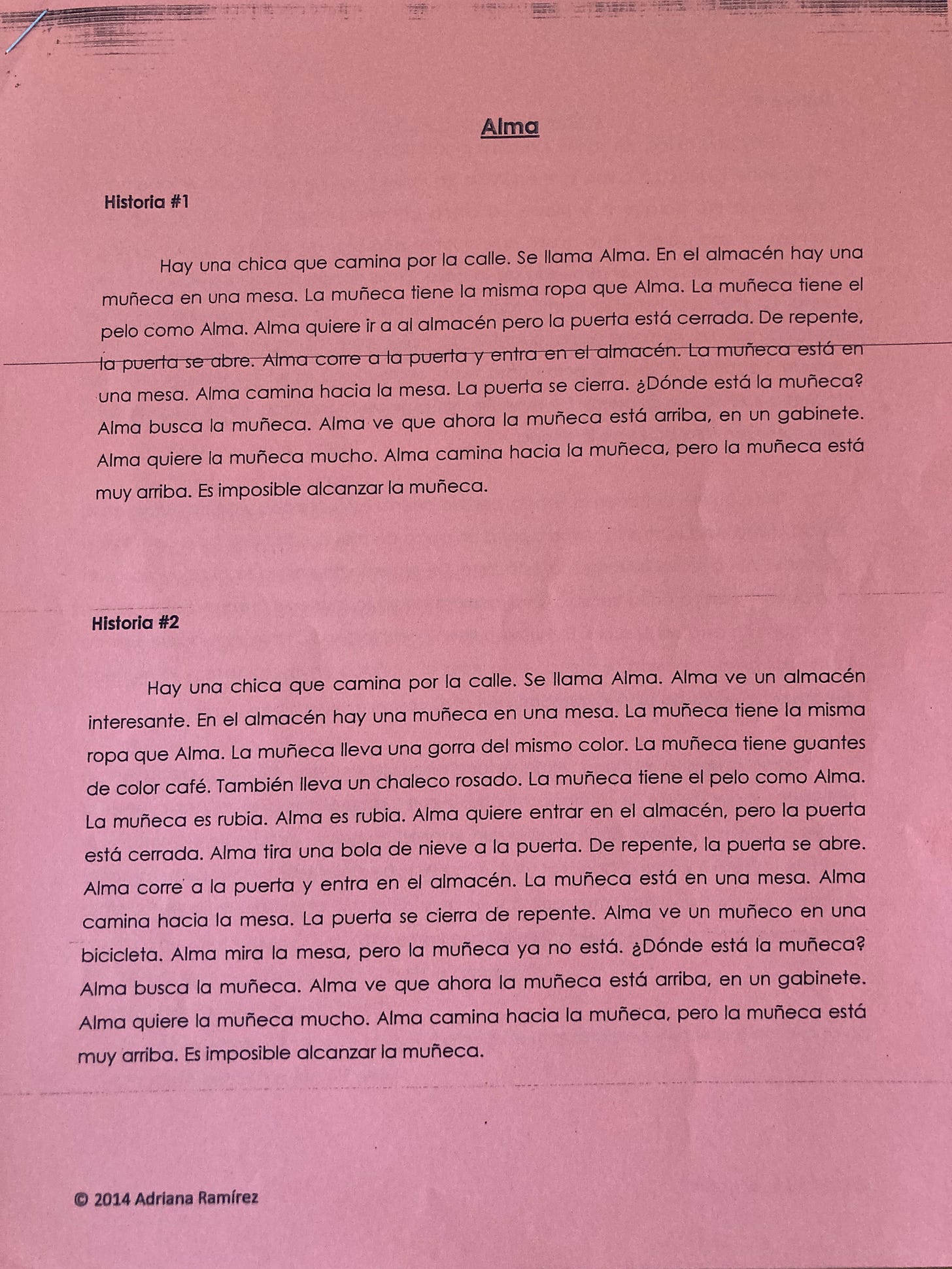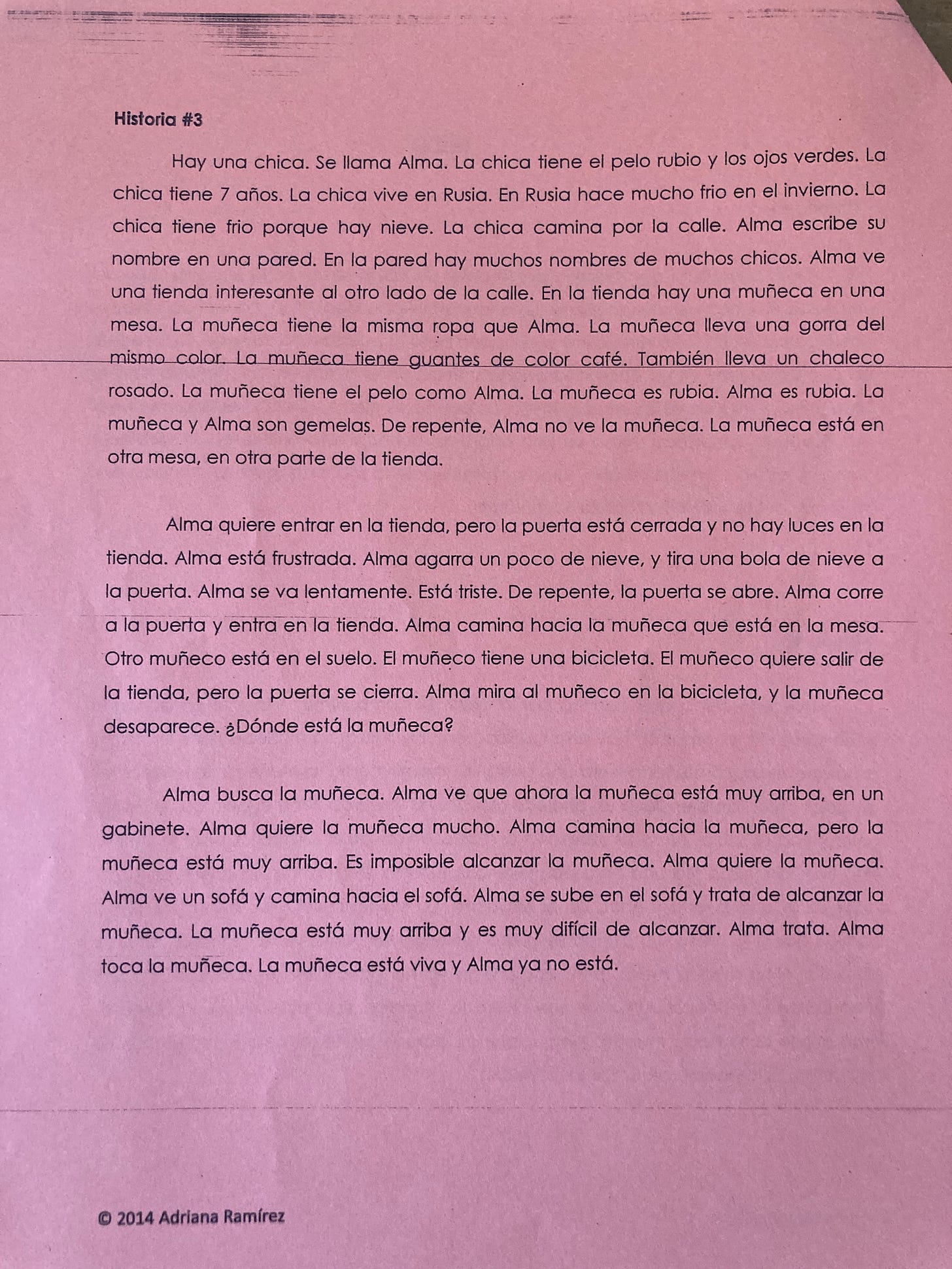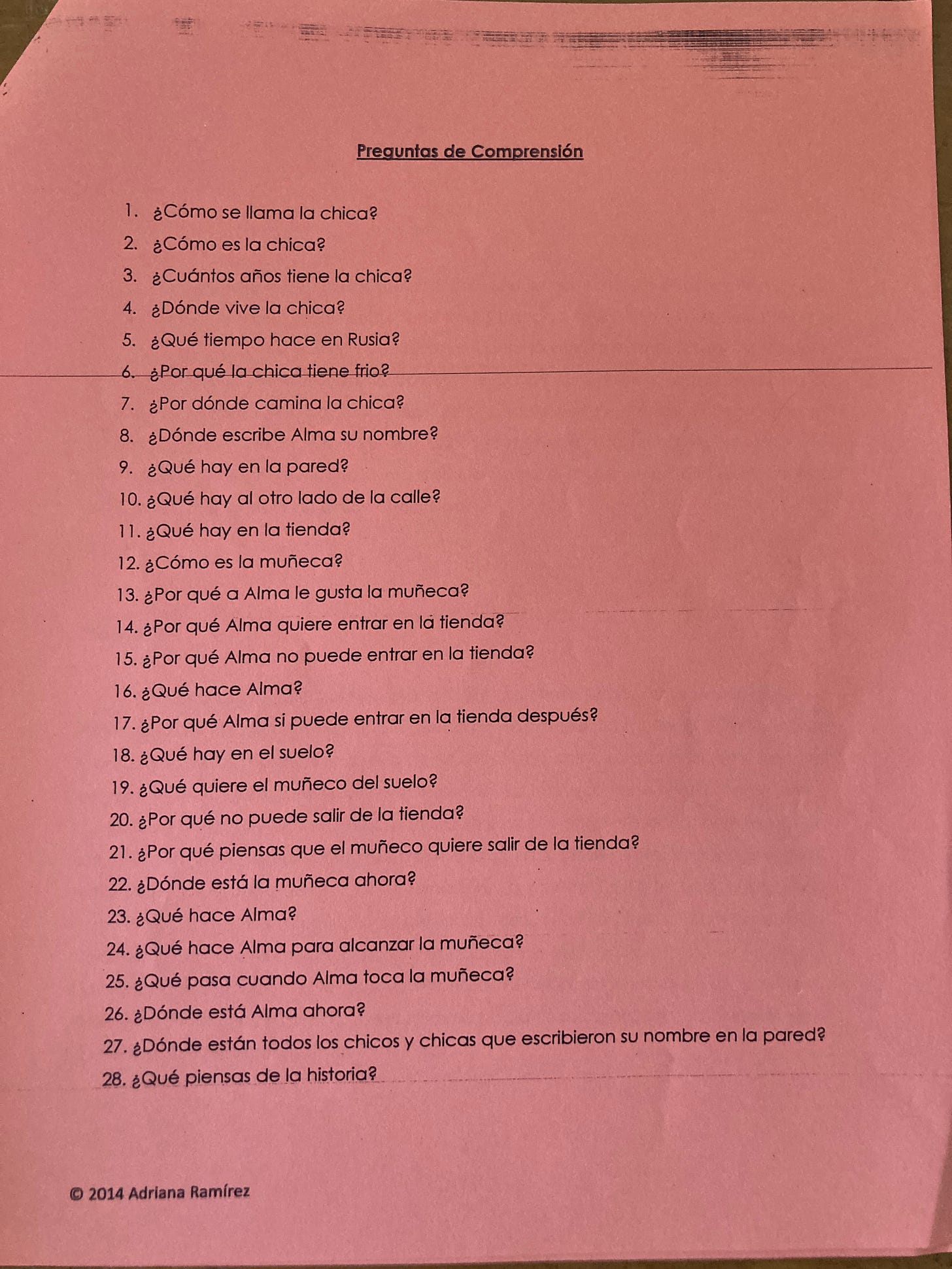What is embedded reading in a languages class?
Increasing input through scaffolded reading texts
In my last post I briefly mentioned embedded reading. This is a reading technique that is often used in the CI language classroom. It was developed by Laurie Clarq and Michele Whaley and it’s a great way of providing lots of written input for our students.
Embedded reading is essentially when you have three versions of a text of varying complexity. The first version is the shortest and most simple. In the second version, the first text is embedded within it, but is expanded with more detail. This text is then embedded within the third version, which has even more detail added. The third version is the longest and most complex text out of the three.
Embedded reading is a great way of scaffolding reading. Students aren’t overwhelmed by unfamiliar language at the beginning, and can slowly make sense of the short text. Once they’ve understood everything in this text (and it’s worthwhile ensuring that they do understand everything), they can move on to the second text. In the process, learners meet the same vocabulary over and over, yet there is variety. We languages teachers are all to aware of the importance of repetition and that learners need to meet a vocabulary item many times in order for it to stick in long-term memory.
Here is an embedded reading text that Adriana Ramírez developed. You can find more of Adriana’s embedded readings and lesson plans for Spanish here.
An example of an embedded reading task. Shared with permission from the author.
Adriana used this text with a grade 9 beginners Spanish class, who have been learning for three months. She spent three 80 minute lessons on this text, and took the class through the following sequence:
1. Front-loading of vocabulary. Adriana wrote key structures and words on the board that would come up in the text. She ‘circled’ (i.e. asked lots of structured questions) around these words and got her student to do actions for certain words.
2. Video talk. This particular text accompanied a silent animated film about a girl called Alma. Adriana played the video, stopping every couple of seconds to talk about what was happening in the video. At this stage the students were just listening, but because they were intrigued to know what came next in the film, they were totally engaged.
3. Reading of text #1. Adriana read the text aloud in Spanish, and the class translated together. She then asks personalised questions to the class using the vocabulary and structures from the text. Students do ping-pong reading, i.e. they took it in turns to translate the text line by line, writing in an L1 translation above any new words. If there were any tricky grammar issues, she very quickly explained them, focusing on meaning.
4. Reading of text #2. Students translated the text, Adriana did more personalised questions did “ping-pong reading”.
5. Watch animated video again. Adriana showed the video, pausing every couple of seconds.
6. Reading of text #3. Students translated the most advanced text with a partner.
7. Comprehension questions in L2. Students wrote answers to L2 questions on the text.
8. Correct comprehension questions aurally. Students are asked to read aloud their answers. Adriana cold-called students and everyone was expected to answer (if they struggled, they were supported to do so).
9. Summarize. The students were shown still pictures from the animated film and asked to write three sentences for each picture.
What was fascinating for me was the ease with which the students were able to write at the end of the sequence. By spending lots of time on input, processing this input and scaffolded writing exercises, the students were able to write fluently and very accurately by the end.
The big take away for me was to not expect students to give output too early and to aim for written production at the end of a carefully planned sequence of multiple lessons. Too often we expect pupils to learn new content and then write about it all within one lesson - in fact, textbooks are often structured this way. By taking a longer-term view, we can help our students succeed in writing by providing the necessary input and allowing students to process this first.
To summarize, here are a few of things I liked about embedded reading:
· It allows students to engage in a deeper way with a text, meaning they have more time to process and acquire the language of the text. Textbook activities in typical UK textbooks often treat a text in a superficial way, and the student doesn’t have the chance to process and acquire new language from the text.
· Fewer transitions between activity makes it easier for students to focus. Sometimes we teachers feel the need to keep changing activity to offer variety to our students, but perhaps there’s a place for less variety and more time spent on one text?
· The length of the text means students are exposed to a lot of vocabulary. This is great for recycling previously learned items, and for learning new items.
· Embedded reading trains students to approach new words with curiosity and to try to work out the meaning from context. In Adriana’s class there wasn’t a dictionary in sight, although occasionally she would translate a word or two if a student didn’t understand something. Students in Scotland are allowed a dictionary in exams, and I wonder whether this leads us to prioritise dictionary skills and intensive reading, rather than over the ability to read a larger volume of text fluently.
· By the end of the sequence, students were able to write in Spanish without resorting to L1-L2 translation or using Google Translate. Rather, they had actually acquired the structures.
· The use of the animated video meant that everything about the text was comprehensible, which was a huge aid for students. It also made it enjoyable and not too dry for the students.
I’m definitely going to incorporate more embedded reading into my classes when I return to Edinburgh!
In my next post I’ll be looking at extensive reading using graded readers.





